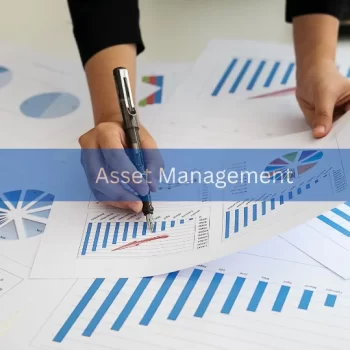In business, fixed assets are tangible items with a useful life of more than one year and are used in producing or supplying goods and services. These items range from office furniture, tools, and equipment to property, plant, and equipment. The inventory of these assets must be kept up-to-date and accurate in order to ensure the financial stability of the business. This blog will discuss the importance of a fixed assets inventory and what necessary steps should be taken to ensure its accuracy.
What are fixed assets?
Fixed assets are long-term physical or tangible assets that a business owns and uses to generate income. Common examples of fixed assets include property, buildings, equipment, furniture, and vehicles. Fixed assets are also known as tangible assets, non-current assets, or long-term assets. They are used in business operations and are not expected to be used up or converted into cash within a year. Fixed assets are recorded on a company’s balance sheet. The cost of fixed assets is recorded as an asset, and the depreciation expense is recorded as an expense on the income statement.
Related Blog: Why Fixed Asset Management is Important and How to Automate It?

Fixed Asset Inventory Management: Types of Inventory
Fixed Asset Inventory Management is the process of managing a company’s fixed assets. Fixed assets are physical items that have long-term value to the company and are not intended for sale or consumption. Examples of fixed assets include buildings, land, computers, and vehicles. Some of the main types of fixed asset inventory include:
- Physical inventory: A physical inventory is a manual count of all the fixed assets owned by the company. This inventory must be updated regularly to ensure accuracy.
- Book inventory: A book inventory is a record of all the fixed assets owned by the company. This inventory is typically maintained on an annual basis and is used to calculate depreciation.
- Electronic inventory: An electronic inventory is an automated system that uses barcodes and scanners to track fixed assets. This inventory is typically used in larger organizations that need to quickly track the location of their fixed assets.
- Insurance inventory: An insurance inventory is a record of all the fixed assets owned by the company that is insured. This inventory is typically updated regularly to ensure accuracy, and the company is covered for potential losses.
Additionally, there are different types of inventory, such as:
- Raw materials inventory: Raw materials inventory is the stock of primary materials a company needs to manufacture its finished products. It typically includes the items used in the production process, such as metals, plastics, chemicals, textiles, and wood.
- Work in Process inventory: Work in process (WIP) inventory is the stock of unfinished goods in a production process. It includes components, subassemblies, and semi-finished products that are in the process of being manufactured.
- Finished goods inventory: Finished goods inventory is the stock of completely manufactured items ready for sale. These include items such as clothing, appliances, electronics, and furniture.
- Maintenance, Repair, and Operating (MRO) Inventory: Maintenance, repair, and operating (MRO) inventory is the stock of items that are used in the upkeep, maintenance, and repair of a facility or equipment. Examples include tools, spare parts, cleaning supplies, and lubricants.
- Cycle count inventory: Cycle count inventory is a type of inventory control process in which a company regularly counts the items in its inventory to ensure accuracy. It is typically done on a rotating schedule, with each item being counted a certain number of times throughout the year.
- Safety stock inventory: Safety stock inventory is the stock of items that are kept on hand to ensure that there is enough of an item available to meet customer demand. It is typically used to protect against unexpected spikes in demand or unforeseen delays in supply.
Why is fixed assets inventory important?
There are several reasons why fixed assets inventory is critical to business success. For instance, a fixed assets inventory
- Provides an accurate record of all fixed assets owned by the company.
- Helps to determine the cost of the assets and their accumulated depreciation. Fixed assets inventory helps to keep track of asset utilization and helps to determine the value of the business.
- Helps identify potential risks like theft, destruction, or misplacement of assets.
- Helps in optimizing the use of assets and helps to determine the actual cost of the asset over its useful life.
- Identifies the assets which are not in use and which can be sold or leased out. Determines the insurance coverage required for the assets.
- Helps to accurately calculate the depreciation expense.
- Aids in tax planning and helps to reduce tax payments.
- Ensures compliance with government regulations.
Knowing the importance of fixed assets inventory, it is vital to take a few steps to ensure its accuracy.
The necessary steps to ensure Fixed assets inventory’s accuracy
Establish a fixed asset inventory policy
It is essential to have a policy that sets out the framework for managing and updating inventory. It should include the processes for recording new assets, disposing of old assets, and the frequency of updates.
Utilize a strong asset tracking system
Using a reliable asset tracking system can help ensure the accuracy of the inventory. A sound system should have features such as bar codes, QR codes, or RFID tags that allow for fast and accurate tracking of assets.

Physical inventory
Taking a physical inventory of all assets should be done periodically to ensure accuracy. This can be done by having a designated person or team that goes around and checks the condition of each asset and documents any new additions.
Reconcile the inventory
Reconciling the inventory with the accounting records should also be done periodically to ensure accuracy. It should include comparing the inventory counts to invoices, purchase orders, or other accounting records.
Regularly update the inventory
To ensure accuracy, the inventory should be updated regularly. It should include tracking any moves, additions, or removals of assets.
Train staff
Staff must be trained on how to use and update the asset inventory system properly. This will help ensure accuracy and help prevent any unnecessary losses.
Businesses can avail of several benefits to make them audit and future-ready by implementing Fixed Assets Inventory.

Benefits of Fixed Assets Inventory
- Increased accuracy and visibility of asset information: A Fixed Assets Inventory system can help organizations accurately track and manage all their assets from acquisition to disposal, ensuring that all accurate information is available in one place.
- Improved asset performance and utilization: By keeping track of assets in real time, organizations can better understand their utilization and performance, allowing them to take the necessary steps to ensure their assets are used efficiently.
- Reduced capital expenditure: By implementing a Fixed Assets Inventory system, organizations can reduce the amount of capital expenditure required for purchasing new assets and instead focus on utilizing and optimizing existing assets.
- Enhanced asset security: With accurate asset information, organizations can better secure their assets by tracking their movements and preventing theft or unauthorized use.
- Improved compliance: A Fixed Assets Inventory system can help organizations remain compliant with regulatory requirements, ensuring that all assets are properly tracked and managed.
- Streamlined asset disposal: An effective Fixed Assets Inventory system can help organizations streamline the disposal process, ensuring that assets are disposed of promptly and efficiently.
Related Blog: The Top 10 Essential Asset Management System Requirements in 2023
Final Note
Fixed assets inventory plays a vital role in any business, providing business owners with the necessary information they need to make informed decisions. It helps to track the value of assets, maintain accurate accounting records, and ensure taxes are paid promptly. With the right system in place, businesses can be more organized and efficient, which will help improve financial performance and reduce costs. Ultimately, fixed asset inventory is an invaluable tool that companies of any size should not overlook.
FAQs
Is inventory considered a fixed asset?
Fixed Assets are non-consumable and long-term physical items that are owned by a business and used for its operations. They are not intended for sale and are typically recorded as long-term assets on the balance sheet. Examples of fixed assets include machinery, buildings, and furniture.
On the other hand, inventory refers to the raw materials, components, and finished goods that a company holds for sale or to use in manufacturing goods and services. Inventory is recorded as a current asset on the balance sheet and is expected to be used or sold in a short period. Examples of inventory include raw materials, work in progress, and finished goods.
What are the 5 fixed assets?
- Land: any real estate owned by a business, including the buildings and other land improvements.
- Buildings: any tangible structure used in a business’s operations, such as an office building or a factory.
- Machinery: any concrete, non-consumable equipment used to produce goods and services, such as production machinery or computers.
- Furniture and fixtures: any tangible items such as desks, chairs, and cabinets used to equip a business’s offices or production facilities.
- Vehicles: vehicles owned by a business, such as cars, trucks, and vans.


















